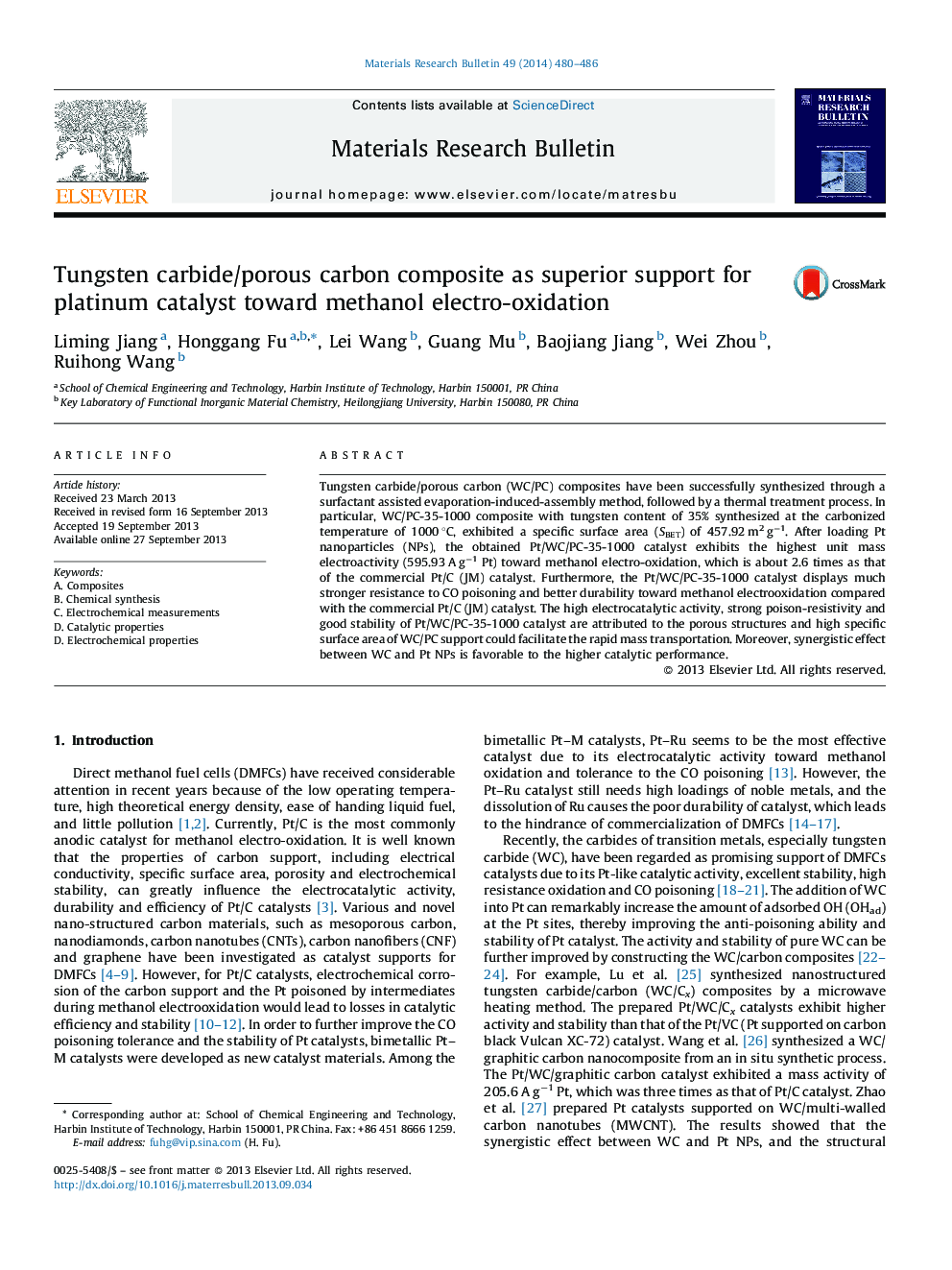| Article ID | Journal | Published Year | Pages | File Type |
|---|---|---|---|---|
| 1488640 | Materials Research Bulletin | 2014 | 7 Pages |
•The WC/PC composite with high specific surface area was prepared by a simple way.•The Pt/WC/PC catalyst has superior performance toward methanol electro-oxidation.•The current density for methanol electro-oxidation is as high as 595.93 A g−1 Pt.•The Pt/WC/PC catalyst shows better durability and stronger CO electro-oxidation.•The performance of Pt/WC/PC is superior to the commercial Pt/C (JM) catalyst.
Tungsten carbide/porous carbon (WC/PC) composites have been successfully synthesized through a surfactant assisted evaporation-induced-assembly method, followed by a thermal treatment process. In particular, WC/PC-35-1000 composite with tungsten content of 35% synthesized at the carbonized temperature of 1000 °C, exhibited a specific surface area (SBET) of 457.92 m2 g−1. After loading Pt nanoparticles (NPs), the obtained Pt/WC/PC-35-1000 catalyst exhibits the highest unit mass electroactivity (595.93 A g−1 Pt) toward methanol electro-oxidation, which is about 2.6 times as that of the commercial Pt/C (JM) catalyst. Furthermore, the Pt/WC/PC-35-1000 catalyst displays much stronger resistance to CO poisoning and better durability toward methanol electrooxidation compared with the commercial Pt/C (JM) catalyst. The high electrocatalytic activity, strong poison-resistivity and good stability of Pt/WC/PC-35-1000 catalyst are attributed to the porous structures and high specific surface area of WC/PC support could facilitate the rapid mass transportation. Moreover, synergistic effect between WC and Pt NPs is favorable to the higher catalytic performance.
Graphical abstractThe WC nanoparticles are well dispersed in the carbon matrix. The size of WC nanoparticles is about 30 nm. It can be concluded that tungsten carbide and carbon composite was successfully prepared by the present synthesis conditions.Figure optionsDownload full-size imageDownload as PowerPoint slide
